Fable 2 Review: Is it Worth Playing Now?
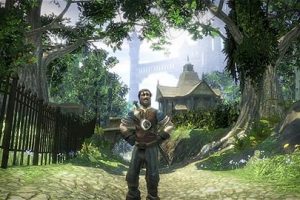
Fable 2 released in 2008 for the Xbox 360 to critical acclaim. The long-awaited sequel to Lionhead’s ambitious, charming but ultimately disappointing Fable, the sequel promised to deliver on all the promises made of the first by the developers.
The game sees the player grow up as the Hero of Albion, adventuring through a fairy-tale world of castle towns, forests, marshes and countryside, battling monsters and bandits as they fight to avenge their sister’s death and uncover the mystery behind the antagonist’s motivations.
As the player grows, their choices and actions determine how evil or good they become, and the game’s characters respond to them accordingly. But how does Lionhead’s adventure hold up today? Let’s find out…
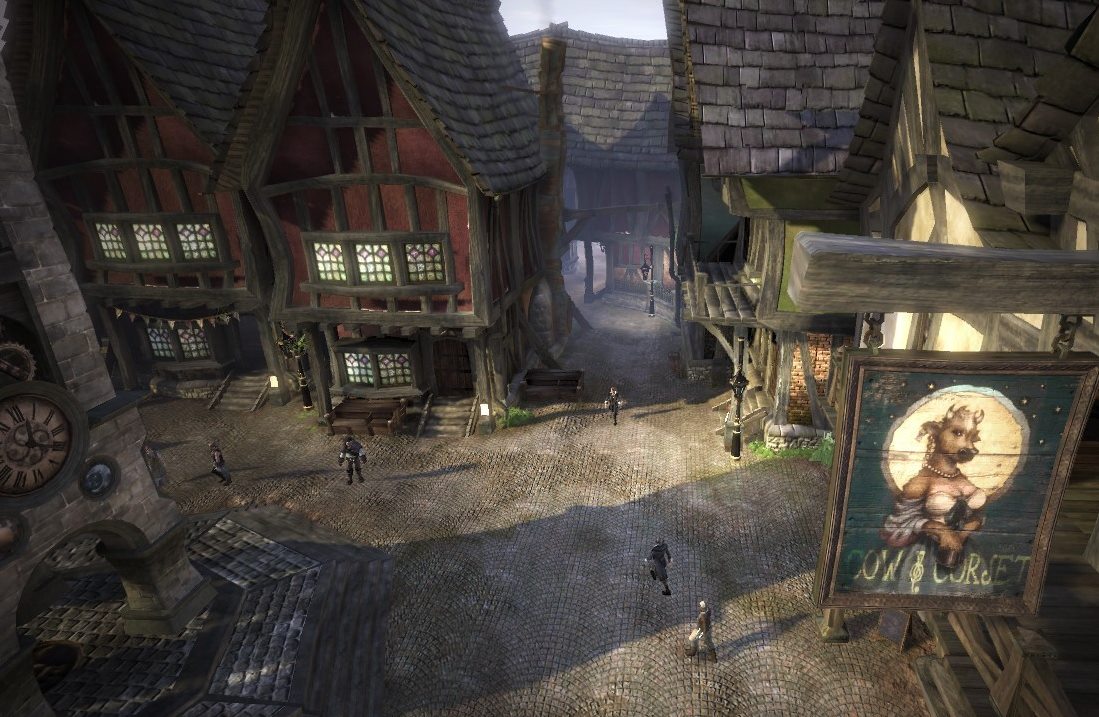
The Good
Style and charm: The most distinctive thing about the Fable series is its unique character, charm and sense of humour the characters and world posses. The game doesn’t really ever take itself seriously, with self-referential gags littered throughout, and a fantastically diverse array of voice actors delivering hundreds of lines of British-humour-laced dialogue throughout. The world of Albion feels really alive in Fable 2 – something that a lot of game-worlds – even today – fail to achieve. Wandering through Albion you’ll rarely hear a repeated line, and the people of each location has their own accent, further enhancing the immersion the game pulls off so well.
Accessibility: Fable 2 brilliantly avoids one of the biggest problems with large sprawling adventure games in that it doesn’t scare the player off at the beginning. Games like the Witcher 3 and Skyrim – brilliant as they are – do tend to put players off by overwhelming them with intricate menus, complicated potion systems and daunting skill trees.
Fable 2’s underlying mechanics have depth, but they are introduced to the player in a subtle and gradual way, with combat and magic very simple in their application. The tutorial is as brief as can be but serves to introduce the story nicely, and before any time at all the player is thrust into the games lush open world with a clear first objective. It’s a very well executed opening, and the from there the game’s mechanics never feel unmanageable like the aforementioned games can do.
Economics: The mechanics may be accessible, but there is no shortage of complexity and depth present in Fable 2. As well as the player’s own underlying stats and trait, the economics of the various towns are always changing unbeknownst to the player. Commit too much crime in a city and the economy suffers, meaning the property values decrease, but rent also decreases. Buy and sell goods in a city frequently and the economy will prosper, and prices you set in your shops influence the happiness levels of the people accordingly. It really adds tot he sense that Albion is alive in this game, and this is heightened when things like going back into a city where you flirted with a woman hours ago is ready in love with you bearing a gift to express her affection.
You can slaughter everyone in Fable 2, and while the game does re-populate, those that do return will remember your past deeds and hate/fear you for it. What’s more, every NPC in the game has a name likes and dislikes, and a personality. You can exploit these to get them to like or loathe you, and it’s very fun doing so.
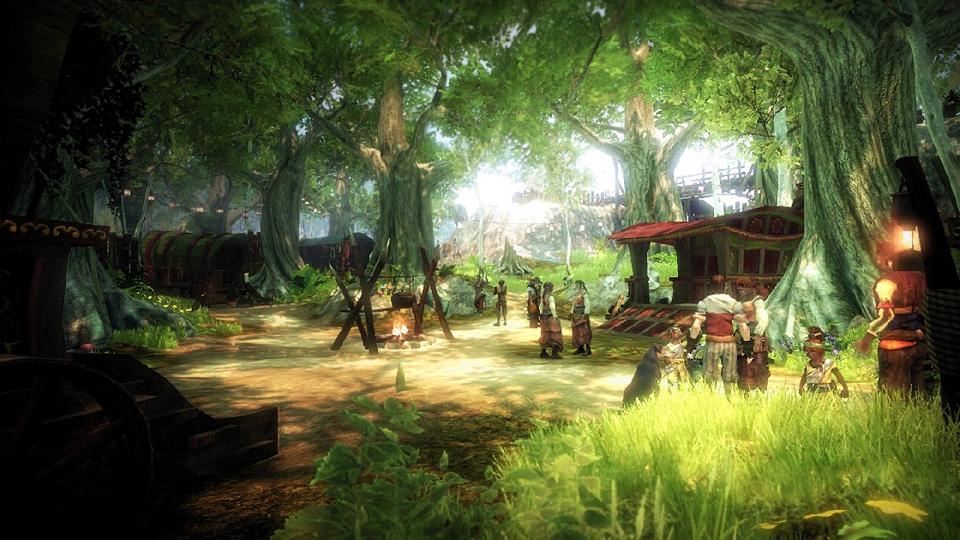
Combat: The combat is satisfying, if a little easy. Juggling between magic, ranged and melee yields rewards in a simple but clever and satisfying experience system, with new skills to learn in each discipline along the way. Melee feels the best of the three, with countering and flurrying feeling nicely weighted and fluid. Magic attacks are novel and fun to do, but the charge-up for powerful attacks takes a little too long, leaving you a bit too susceptible to attacks. Ranged attacks really come into their own after most of the abilities have been unlocked, and you’re able to zoom in for head/limb shots.
Graphics, lush world, architecture: My biggest surprise playing this game nearly 10 years after release was how fantastic the world of Albion still looks today. The rolling green hills, babbling brooks, bustling towns and enchanted forests are all oozing with style, coming together to convey that whimsical fairytale atmosphere the Fable series achieves better than most other games in its genre. The design and art-direction on the building architecture is particularly excellent, and to its credit the game avoids the ‘cookie-cutter’ feeling – every nook and cranny of the world feels uniquely crafted, so you don’t feel like you’re exploring the same cave or dungeon 20 times over.
Secrets: Replaying the game, I’d also not anticipated the sheer amount of hidden and extra optional content available, which I’d overlooked in my first playthrough years ago. The main quest is fairly straightforward and keeps things chugging along a liner path, though now and then you’re encouraged to explore and spend time doing other things. Making an effort to really diverge off the beaten path leads to the game’s rewards, both tangible in terms of XP and rare weapons, but also in ways that serve to enrich Albion’s believability and charm. The quests are unique and well-thought-out; speaking to an old man in a pub sent me on a quest to kill the ghost of a dead pirate, which then gave me control of his ship, which allowed me to sail to a remove island to find his treasure. Another quest was triggered by me purchasing a haunted tower and sleeping in the bed at the top, which plunged me into a nightmare-themed quest with a haunted treasure chest. These felt totally optional and easy-to-miss, which added to the enjoyment in discovering and playing them.
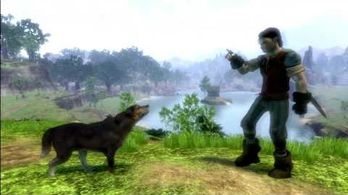
The Mixed
Music: It’ a shame the score isn’t quite up-to-par with the voice acting in terms of quality. It isn’t bad by any means, with a few catchy jingles, but it doesn’t quite compare to other action-RPGs like Zelda, The Witcher or Skyrim.
Length: It took about 15 hours for me to complete the main quest, but that was with a lot of extra exploration and dedication to achievements. There’s a lot in Fable 2 if you take the time to look for it and experience it, but if rushing through the main quest it shouldn’t take much longer than 8 hours. To do so, though, would be missing out on the point of the game, which is to develop your character and discover/become invested in the world and its characters. The endgame quests vary from average to good, with a generous amount of post-game quests to complete including purchasing a castle and discovering its hidden secret, to killing 50 gargoyles scattered throughout the world. All-in-all there’s about 25 hours here, which whilst short compared to Skyrim or the Witcher, never feels bloated or padded out.
Follow the light: Part of Fable 2’s strength is that it feels far more accessible than many of its peers in the genre, with menus and HUD options kept as simplistic and minimal as possible. And whilst exploration is explicitly encouraged by the game, by default a glowing trail of light is ever-present, which leads you to the point of your next objected for your active quest. It’s deliberately unsubtle and can be seen at all times, and whilst it can serve to keep the game flowing it may be a bit much for players who wish to feel more free in their choice of navigation, or those who enjoy working out where to go. Thankfully it can be turned off in the options menu.
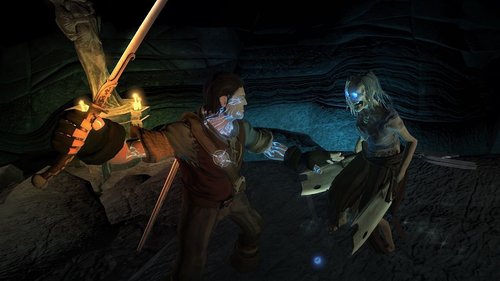
Expressions and morality: A unique part of the Fable franchise is the expressions system, which lets you pick from a generous array of different gestures, expressions and actions in order to garner a response from the people of Albion. Be it respect, admiration, fear, hatred, awe, humour, jealousy, appreciation, disgust, and everything in between, it’s easy and funny to pull off these expressions. It’s just shame there isn’t really that much impact the general populace’s opinion of you has on the game’s outcome, and equally there isn’t too much you can get out of one individual other than making them fall in love with you and marrying them. The expression system feels like more of a missed opportunity than a game-changer.
Difficulty: At no point in Fable 2 will you get frustrated because of the challenge or get stuck, which in many ways is a good thing, as the game flows at a nice pace, and the ease in which you dispatch enemies makes you truly feel like the Hero of Albion. But equally, at no point will you really feel challenged, and attain the satisfaction that comes from solving a brain-scratching puzzle (the ‘puzzles’ in the game’s dungeons are one of the game’s weakest features, mainly consisting of shooting a glowing orb several times until a door unlocks, or clearing a room of enemies), or defeating a difficult boss. I enjoyed the games breezy attitude to challenge; it’s game which enjoyment comes from exploration, development, discovery and charm, rather than Dark Souls-esque challenge.
Doggy style: You are given a four-legged companion from the get-go, and he is great. He does tricks, fights enemies and finds treasure for you to dig up. He’s also invincible, in that whenever he dies he comes back after a few minutes. The trouble is, the canine element feels undercooked – nothing you really do influences your relationship with him, and he’s never a crucial part of the game’s plot. He’ll love you whether you’re good or bad, whether you pet him or scald him, and his tricks don’t really get you anywhere. It feels like the devs spent lots of time perfecting the animation of the dog then forgot to do anything meaningful with it.
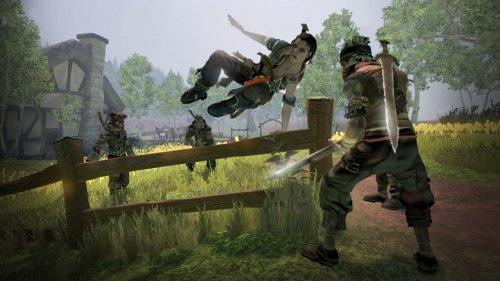
The Bad
Not fully open: One of the big marketing points for the game was that it was ‘fully open-world’ and there were ‘no boundaries’. This sprung out of one of the major criticisms of the first Fable, which was played almost entirely on paths and roads, with no open-areas and a distinctly linear path. Initially it feels like Fable 2 gets this right, with the sprawling Bower Lake your first area, which is very much an open vista to explore. Sadly things get far more liner later on, with most of your time spent either in towns or on narrow roads with one direction only. It’s a shame, as a truly open-world would have been welcome.
Puzzles: I mentioned it above, but the game’s dungeons could really have used some more interesting puzzles. Shooting a glowing orb for the twentieth time to open a door really gets old, as does clearing hordes of the same enemy you’ve become used to. Even some basic block logic puzzles or flame lighting riddles would’ve served to spice things up. Fable 2 isn’t game that’ll get you head scratching.
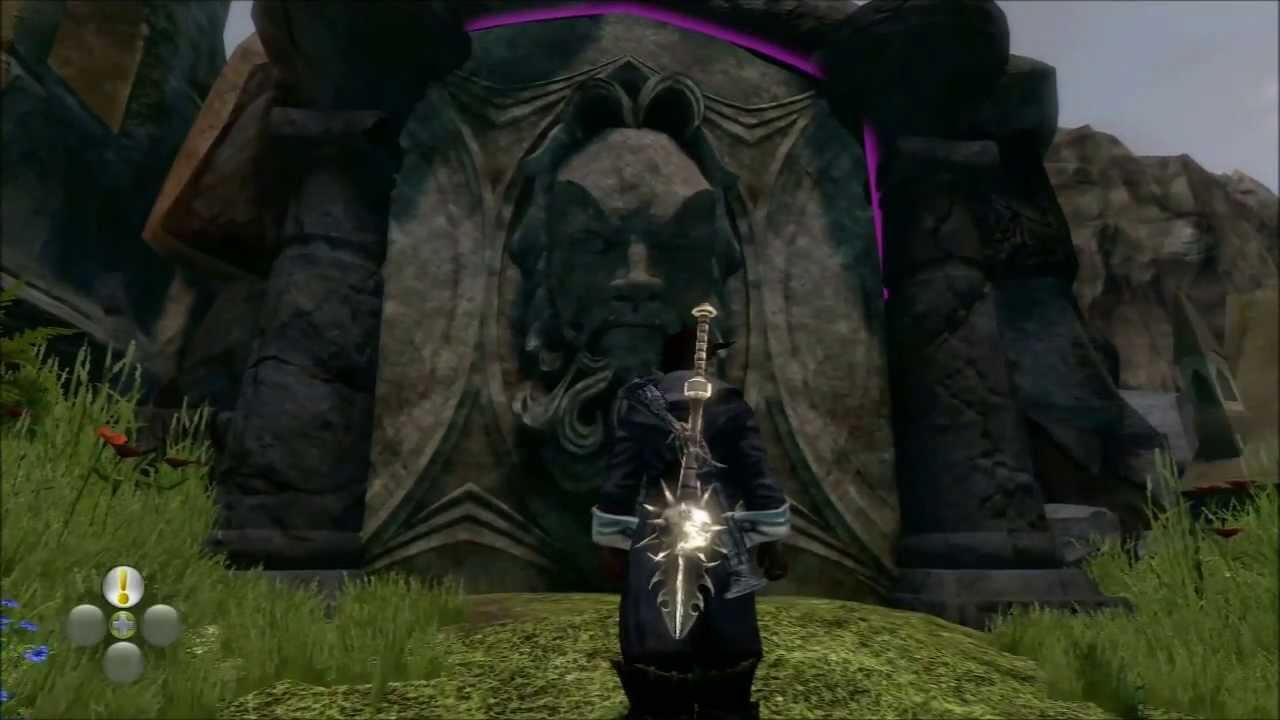
Morality: The morality side of the game is once again interesting in concept, but falls flat in practice. Similarly to the first game, your actions determine whether you are good or evil (or something in between) and where you lie on the scale determines your appearance and the way people respond to you. There are two problems with the way the system is implemented however; firstly, there really isn’t much of an impact outside of your appearance on the game.
At one stage you have to pick between two religions, one being evil and the other good, and that’s really the only point the good vs evil debate has any real bearing on how the game’s world evolves. Secondly, and this is a problem other games with similar mechanics face, it really isn’t that much fun being good, and it’s far too much fun being evil. In order to remain on the ‘good’ side of the meter, you have to refrain from killing anyone, entering any home without permission, looting anything and basically doing anything too enjoyable. You can’t even set the rent of your property over the average without getting some bad karma. Every time I’ve played through any Fable game I go in with good intentions, but always seem to come away as Albion’s Hitler.
Map: For some reason there is no fully accessible map of the world. The game’s areas already feel fairly disjointed, with loading screens in between them, but this could be forgiven if there was a large visual map knitting everything together. Without this, it’s difficult to get a feel for how the world looks, and how the areas sit in relation to each other. To compound the map misery, the maps you do get of each are aren’t interactive, and are pretty useless, with blotchy colours representing buildings, with little to indicate what the colours mean, and no arrow showing where the player is. An oversight for sure.
Finale: Without giving away too much, the game’s finale is something of a letdown, and screams of developers running out of time before release. It’s the only point in the game’s main quest that feels like this, so it’s a shame and taints the memory of the campaign, rightly or wrongly.
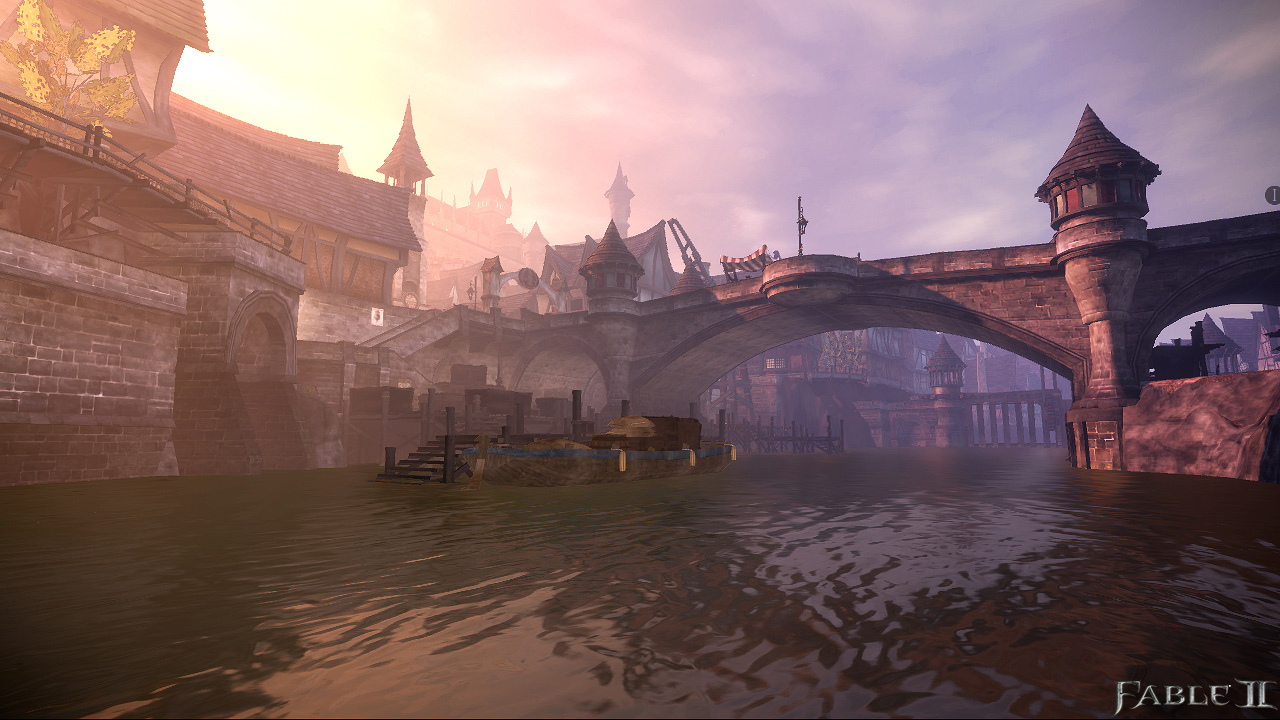
Overall
I had an absolute blast replaying Fable 2 after all these years. The graphics have aged really well, the charm of the game’s characters and world remains intact, and I found myself thinking about the game when I wasn’t playing it, which is always a good sign. There are a few minor gripes and half-baked ideas, but overall if you enjoy fairytale worlds, sprawling adventures and RPG elements, Fable 2 is amongst the best the 360 had to offer and still worth experiencing today.
8/10